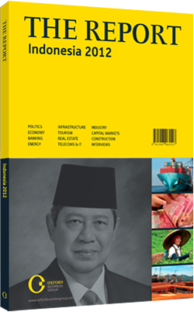Sudhamek AWS, President Director, GarudaFood: Interview

Interview: Sudhamek AWS
To what extent is growth within the food and beverage industry able to continue rising?
SUDHAMEK AWS: The growth that we have experienced is very much sustainable over the medium term. Moreover, it is one of the most stable industries in the country. The official GDP growth in 2012 is expected to be around 6.5%. Moreover, growth is no longer restricted to Java. In fact, the ratio of consumption between Java and other islands has narrowed from 65:35 to 48:52. This represents a great opportunity for the industry, as long as issues related to logistics can be adequately addressed and affordability maintained. Additionally, per capita consumption, when compared to other Asian countries, has remained relatively low, and as per capita income increases, improved prospects for growth and increased domestic consumption are inevitable.
As a result, many investors have begun to set up production bases here in Indonesia. The size of the domestic market alone provides enough incentive. With the potential for export factored into the equation, it is a very attractive situation indeed. This is ideal for potential joint venture partnerships between Indonesian-based food and beverage manufacturers and businesses in other high growth markets like China, India and the Middle East. It is my assessment that over the course of the next 10 years we could see the industry achieve double-digit growth.
How do you respond to the claim that logistics costs are acting as the greatest disincentives to investment in Indonesia?
SUDHAMEK: We have to live with the fact that infrastructure in Indonesia remains our primary obstacle and this situation is unlikely to significantly change in the foreseeable future. More specifically, our major concern is the lack of interconnectivity between the two major markets of Java and Sumatra. To overcome this challenge we have established several factories in both provinces. Economically, it is not ideal, but this is the reality that we are confronted with, and so we deal with it as best we can. While the private sector, in many instances, has developed its own infrastructure to compensate for shortfalls in the system, we cannot do it all on our own. It is simply too costly. The challenge of addressing infrastructure development is one for the government to address. While there have been a number of improvements, expectations have not been met.
Supply chain costs for the food and beverage industry continue to hover around 19% on average. In comparative terms, this is much higher than most of the other developed countries in the region. Singapore, for example, which sets the benchmark that all countries should strive to match, has a centre of logistical excellence, and operates at around 9.8-10%.
How has the sourcing of raw materials from the domestic market improved? What can be expected in the immediate future?
SUDHAMEK: Strategic sourcing is important, as packaging and raw materials account for 65-70% of food and beverage costs. One of the challenges that we face as an industry is that while we may source a commodity domestically, we are still required to pay the international price, as is currently the case with peanuts. Therefore, we not only have to manage the quality and quantity of the supply, but also the price.
Indonesia has gradually become more competitive in the upstream industry, thus improving the supply of food and beverage materials. Advancements have been made within the flour, cocoa and sugar industries. In the future I anticipate that this trend will continue, as there are large quantities of land that are not being utilised at present. Papua, for instance, holds great potential, since its land and climate are ideal for agricultural development. More generally, there can be little doubt that the sourcing of raw materials from the domestic market will play an even greater role in the industry’s continued success.
You have reached the limit of premium articles you can view for free.
Choose from the options below to purchase print or digital editions of our Reports. You can also purchase a website subscription giving you unlimited access to all of our Reports online for 12 months.
If you have already purchased this Report or have a website subscription, please login to continue.

